Is there a pilot shortage?
Lately it seems like everyone is talking about a pilot shortage, but is there really a pilot shortage? Depending on whom you ask and what data they present, the answers can be widely varied. ALPA (Airline Pilots Association) is adamant that there is not a pilot shortage. On September 14, 2022, they released FAA data showing that in 2022 in the United States, 9,087 new ATP-MELs were issued. That total is 2,423 more than those issued in all of 2019.
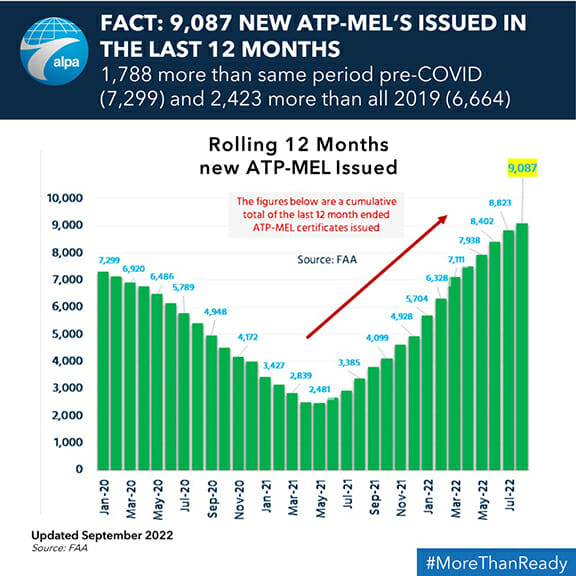
According to an article from CNBC dated September 13, 2022, a “management consulting firm Oliver Wyman estimates” there is around an “8,000-pilot deficit,” which could reach upwards of “30,000 by 2025.” They cited that this is because of the pilots who took the early-out retirements during the Covid pandemic combined with fewer pilots coming from the military. If only it were that simple.
There is no one main reason (or even two) why some airlines and charter companies are having issues finding and hiring pilots. The issue goes much deeper than just what has transpired over the last couple of years. Before we can really decide if there is a shortage of pilots or not, we need to look at pilot hiring and relative events over the last five decades.
History Lesson, The Last Five Decades
1970s
Let’s begin in 1975 when the United States pulls out of Vietnam and the Vietnam War is over. Over the 20 years before this event, the U.S. military trained a lot of pilots. These pilots’ tours of duty were now over and they were coming home. Most of these pilots happened to be part of the Baby Boomer generation, born between 1946 and 1964. At this point in time, the airlines are flooded with applications from these highly qualified military pilots resulting in many of them being hired by airlines. There were so many that some were unable to upgrade to captain for many years.
1980s
The 80’s brought a lot of turmoil, mergers, acquisitions, and volatility in the airline industry. This decade invoked anger in some pilots, some held still to this day. My father was part of that generation and the mention of a certain CEO’s name would send him off in a cursing fit. He wasn’t alone in his sentiment. I used to have to remind him, “That was 20 or 30 years ago, let it go.” I suspect this attitude had on impact on many would-be pilots. That generation did not encourage the next to become pilots – not their own children, nor friends’ children, nor anyone for that matter. The negativity portrayed by some of the pilots in the 80’s discouraged many. It’s also very worthy to note that turmoil and instability is not uncommon in this industry. When it’s good it’s great! When it’s bad, it’s back to flipping burgers. Who in their right mind would sign up for that type of instability in their life? I’ll tell you who; an individual who is born with the desire to fly – who has it in their blood to be a pilot, always looking up at the sky as far back as they can remember, the ones for whom it has been their lifelong dream to strap on a huge piece of metal and point its nose up to the sky. It is said that pilots are a rare breed, but we love what we do and we accept the risks of it all.
1990s
Despite the negativity held over from the 80s, the airlines saw an abundance of new pilots coming into the market. So many that the regional airlines, that up to this point had only a few hundred pilots and operated flights 200-600 miles from their hubs, expanded to a couple thousand pilots at each regional and traveled up to 1,200 miles away. The debut of the regional jets, Canadair 200 and Embraer 145 in 1991 and 1995 respectively, helped pave the way for these longer routes and the growth of the regional airlines. This allowed major airlines to pay regional pilots less for the same routes that their mainline pilots on the MD80, DC-9, 727 and 737 used to fly. Starting pay for a first officer in the 90s at a regional airline was around $16,000 a year. Plus, some of these airlines required the pilots to pay about $8,000 for the type-rating training to fly these planes. Captains’ pay was better, but that could take several years depending on the seniority list and pilot movement. The hope remained to build time and be hired by a major airline, which was a much more lucrative endeavor.
Because I will reference it again, let me describe what “pilot movement” is. Pilot movement is pilots bidding up or down, to different aircraft or upgrading to captain from first officer. Bidding is based solely on a pilot’s seniority at that company. The more senior the pilot is, the better aircraft or schedule he/she can obtain. Pilot movement can happen voluntarily or involuntarily. Voluntary pilot movement is usually caused by either older pilots retiring opening a position, pilots leaving one airline for another (typically regional or corporate to major), or the airline growing and buying or leasing new aircraft. Involuntary pilot movement is when an airline is decreasing the number of aircraft or eliminating routes, forcing a senior captain into a smaller aircraft or back to a first officer. This is known as being “displaced.”
It’s worth mentioning that rumors of a looming pilot shortage started to circulate in the mid to late 90s, which I believe caused people to become interested in flying careers. The pilot shortage was allegedly going to be caused by the Baby-Boomer generation turning 60 and being forced to retire. Back then, the shortage was forecasted to occur between 2006 and 2024. There were projections that during this period up to, or over, half the number of airline pilots in the U.S. would be retired.
Towards the end of the 1990s, the military began to train fewer pilots and started to train drone operators which impacted the number of pilots being trained in the U.S. (The first UAV used in military combat was in 2001.)
2000s – The Lost Decade
The Lost Decade name came from a series of unfortunate events that lead to several thousand pilots either becoming stuck at regional airlines, being furloughed, displaced, delaying the start of their flying careers, or worse yet, finding a new career altogether.
The first of these events was September 11, 2001, when four U.S. airliners were highjacked and intentionally crashed into the twin towers in New York City, into the Pentagon and into an empty field in Pennsylvania. At the time, 9/11 was regarded as the single worst event to affect the aviation industry in the history of flying. The aftereffects were staggering. Airlines that had been hiring, immediately stopped, new-hire classes were cancelled, thousands of pilots were furloughed, and many, many more were displaced either to different smaller aircraft, from captain to first officer or from a mainline airline to a regional airline. This event also significantly discouraged would-be pilots from beginning their careers. The year immediately following 9/11 saw significant drops in enrollment in flight programs at universities across the U.S.
Obviously, I mean no disrespect or disregard for the tragic loss of life of the victims and the fallen heroes on that day. I mean only to present the facts about the fallout that 9/11 had on the aviation industry. Surely, every pilot who was furloughed, displaced or sought a different career held nothing but the utmost respect for the lives that perished on September 11, 2001, and sympathy for their loved ones.
The year 2006 marked the start of the Baby Boomers turning age 60 and being forced to retire. This caused the airlines to start hiring again and pilot movement resumed, but this movement was short lived. On December 13, 2007, President Bush signed the Fair Treatment for Experienced Pilot Act allowing pilots to retire at age 65 vs. age 60. One of the arguments in favor of this bill was that 150 to 210 pilots were being forced to retire every month when they reached age 60. What they didn’t address was when they turn 65, the same thing was going to happen. This event, much like 9/11, turned off the hiring and pilot-movement faucet. It’s my belief that one of the reasonings behind passing this bill was that it would give more time for younger, newer pilots to obtain their ratings and flight time, so that (hopefully) when the retirements started again, there would be a surplus of experienced pilots waiting to be hired. But in my experience, this backfired. This was another setback for new would-be pilots. Who wants to wait five years to get a job? A job that was only paying $30-40,000 a year, at that time. This unfortunately, in my experience, again discouraged would-be pilots from even pursuing a career in aviation.
Months after the age-65 bill was signed, The Great Recession, an economic crash that had been brewing for years lasted for over a year. During this recession, pilots were furloughed and displaced again. For some pilots this was their second furlough of the decade. As you can imagine, this kind of turmoil can lead an individual to switch careers, and many did.
On February 12, 2009, tragedy strikes again, Colgan Air Flight 3407 suffers an aerodynamic stall while turning onto final approach into Buffalo Niagara International Airport, killing all 49 people onboard as well as one person in their home on the ground. This crash was the impetus for several new laws that greatly affected pilot hiring. These new laws came into effect in 2010.
The Lost Decade, in my opinion, is by far one of the biggest contributors to the aviation industry having trouble finding qualified pilots. Personally, I had several friends who spent tens of thousands of dollars on flight training yet they simply walked away from flying because of the events that transpired during this decade. They sought new careers, and at this point, it’s no longer feasible for them to come back.

2010s
The crash of Colgan Air Flight 3407 created news rules for pilots. (My intention here is not to cover all the rule changes, but to address the ones that affected pilot hiring.) After the investigation into the crash, the NTSB concluded it was pilot error owed to pilot fatigue. This was the first crash in history wherein pilot fatigue was one of the major contributors to a crash. On August 2, 2010, the Airline Safety and Federal Aviation Administration Extension Act of 2010 (Public law 111-216) is signed into law by President Obama.
The greatest impact from this law on pilot hiring was the ‘1,500-hour rule’ which required all Part-121 (airline) pilots to have an Airline Transport Pilot, (ATP) license. Minimum number of hours rose to 1,500. Previously, a first officer only needed to have his commercial license, which can be obtained with as little as 250 hours of flight time. This increased the minimum fight time requirement by six times over the previous amount! The act did allow for some leeway for pilots who obtained an aviation bachelor’s or associate degree and for those who were trained by the military to reduce the minimum time required for a restricted ATP (rATP) license. The second greatest impact of this law is that in order to be a captain with a Part-121 airline, a pilot must have 1,000 hours of flying experience as a Part-121 airline pilot. This rule impacts pilot hiring now more than when it was first enacted. As I recall, at the time it was legislated, some regional airlines had pilots with fewer than 1,500 hours, so they had to be put on leave until they could obtain the requisite flight time and return.
In 2012, the Baby Boomers begin to turn age 65 and airline pilot retirements restart at alarming rates. The result is that pilot hiring and pilot movement are at full speed ahead. As the regional airline pilots leave for more lucrative jobs at the major airlines, the regionals find that hiring pilots is not as easy as it used to be, and the bonuses and incentives begin. Regional airlines were offering pilots $10,000, $15,000 and even up to $20,000 sign-on bonuses. By the middle of the decade, regional airlines are fighting each other for the pilots who just meet the 1,500-hours minimum or the rATP minimums.
Aero Crew News made its debut in 2016 wherein we introduced The Grid, a spreadsheet tool that allows pilots to compare the contracts of regional and major airlines. We would like to think that we helped to contribute to some of the quality-of-life improvements, but realistically it would not have happened had there been a surplus of pilots ready to be hired.
As we approach the end of this decade, the regional airlines continue to be creative with increased bonuses. Examples are paying for pilots’ ratings and giving travel benefits away to before they are hired as pilots. One airline even removed seats from some of their aircraft to evade the Federal Aviation Regulations (FARs) and fly under Part 135 (Charter operations) vs. Part 121 (airline operations). This allowed them to hire first officers who did not meet the flight-time requirements for the ATP or rATP and have them fly passengers while building flight time.
At the end of the decade in 2019, air travel hits an all-time high. The aviation industry has had almost a full decade with no setbacks, pilot movement is at an all-time high, and pilots meeting the ATP or rATP minimums have their choice of which airline to work for. But as everyone now knows, the airline industry is very volatile and a global pandemic was brewing.

2020s, The Pandemic
The start of 2020 with its lockdowns, was the worst single event for the aviation industry, EVER. Let’s face it, it was the worst thing for the entire world and for almost every single industry. (Granted, there were some that profited from it, but we won’t talk about that.) Air travel stopped, pilots were furloughed and displaced, contract concessions were made, and entire airlines turned their lights off for the final time. Most major airlines offered early-out retirements for pilots of a certain age, usually within two to three years of turning age 65. Thousands of pilots across the U.S. took these packages and retired early.
The first Covid-19 vaccine came out in December 2020, but airlines have still not yet fully recovered. This year, 2022, has been a robust travel year, but certain countries are still shut down and flights are restricted into others. In the last 18 months or so, the airlines have seen a huge uptick in travelers. At first it was pent-up demand – people just wanted to get out, travel, go somewhere. The leisure travelers were the first to come back and the business travelers started to come back slowly in late 2021 into early 2022. Because of this, these last couple of years have been very challenging for airline management, especially when it came time to displace or furlough pilots. It takes four to six weeks to train one pilot on a new aircraft or a new seat. Imagine a company with 10,000 pilots at the start of the pandemic and they retrained 70% of their pilots after displacements. With a limited and finite number of simulator slots, it would take years to train! This is what started to occur in 2020-21.
For example, let’s say an airline has 100 captains and 300 first officers on the 777, but now due to the pandemic, they only need 25 captains and 75 first officers. Assume all the captains, want to keep their captain’s seat so 75 of them bid down to a smaller aircraft, say the 767, displacing those captains, for which there were 300 captains but now only needs 100. The 275 767 captains then bid down to the 737, displacing other captains. Now the first officers do the exact same thing. You can quickly see how this snowballed and thousands of pilots become displaced and needed to be trained on a new aircraft or a new seat. This is exactly what happened during the pandemic and some airlines have not yet caught up with their training backlog.
Travel didn’t only bounce back, it skyrocketed. Not only did these airlines have to retrain their existing pilots who were displaced, but they also had to hire and train new pilots. United Airlines and Delta Air Lines have hired record numbers of pilots since hiring resumed. Before Covid, United and Delta had just over 12,000 pilots each, Delta is now just over 14,400 and United is well over 15,000 pilots. Pre-Covid, American Airlines was around 14,500 pilots and they are now over 15,000. We can’t forget that several thousand pilots took early outs or retired during this time.
So, is there a pilot shortage?
Let me state it again; it depends on whom you ask. And I’ll add for your consideration, what is their motivation? Republic Airways, a regional airline, recently filed for an exemption to the 1,500-hour rule citing that their training program was at the level of a military program. They were asking the FAA for dispensation to use the 750-hour requirement at which military pilots are allowed to obtain their rATP license. The FAA denied Republic Airways in September 2022. ALPA was a big opponent to Republic’s request citing how many newly minted ATPs the FAA has issued this year. ALPA also citied that since the 1,500-hour rule came into effect, airline passenger fatalities have decreased by 99.8%. There has not been a major airliner crash in the United States since the passage of the Airline Safety and Federal Aviation Administration Extension Act of 2010. I believe this is proof that experience on the fight deck benefits aviation safety.
As of just a few months ago, American Airlines set the bar for pilot pay among regional airlines through its wholly-owned partners, Envoy, PSA and Piedmont. Starting-captain pay rose from $85 to $219* per flight hour, while new-hire, first-officers went from $51 to $135* per flight hour. To compete, several other regional airlines have had to increase their pay rates too. (*Includes 50% premium pay in effect until August 31, 2024.)
We must ask ourselves, if there were a bountiful supply of pilots, would we be seeing the pay rates increase so drastically for regional pilots? The economic rule of supply and demand would suggest that there definitely is a shortage of pilots willing to fly for a regional airline.
The solution?
The biggest hurdle is that there is no easy fix to train new pilots. From start to finish, being hired as a first officer at an airline (or “zero to hero” as some call it), you are looking at a minimum of 19 months to two years, if you’re lucky. If a student pilot only trained and studied and did not hold a job, they could get their private pilot’s license, instrument rating, commercial pilot’s license, multi-engine rating, certified flight instructor (CFI), certified flight instructor instrument (CFII) and multi-engine instructor (MEI) in nine months. This timeline of course, is contingent upon good weather, being on the flight schedule as much as possible, nonstop studying, availability of designated pilot examiners (DPEs) when the student is ready, and between $110,000 to $130,000 at the ready. At the end of this best-case scenario, now the new pilot is around the first 250 accumulated flight hours. (Just to give you an idea of the current backlog, a recent poll on a CFI Facebook group suggested that a DPE is typically being scheduled 1-3 months in advance.)
Now, the next phase is time building and there are several ways to do this through flight instruction, banner towing, cloud seeding and geo mapping, to name a few. If you were to go through an FAA certified Part-141 school and receive an associate or bachelor’s degree in aviation, you can be hired by a regional airline with minimums of 1,200 flight hours, otherwise you’ll need 1,500 flight hours. Again, assuming good weather and 100 hours a month, one can build their time within ten or 13 months respectively. Realistically however, there are always weather issues and flight-training events that are cancelled, DPEs are booked for weeks if not months out, planes are down for maintenance, money issues or loans are not coming in, etc. Everyone must expect and plan for delays. Bottom line – realistically it’s a minimum of two to three years from zero experience to first officer at a regional airline.
In my experience, I would say the biggest hurdle for student pilots is the money followed by the time it takes to build one’s flight time. In most cases, the time costs money, too. I do believe we will soon see a time when airlines are hiring individuals with only their private pilot’s license and absorbing the costs for their training, paying them while in training and paying them to teach the next group of pilots while they build time. Of course, I see a minimum number of years of service attached to such a contract, but a proactive airline should start crunching the numbers on this plan, if they haven’t already. United Airlines and Alaska Airlines have already started their own flight schools. If one is accepted into United Aviate Academy, United Airlines’ own flight academy, the private pilot’s license is free, but the cadet will need another $100,000+ to finish up. (Competitive scholarships are available through partner organizations and loans are underwritten by agreement between United and loan providers.) See our July feature, United’s Aviate Academy is Off the Ground.
Another huge hurdle for existing pilots is their FAA medical certificate. Occasionally, pilots lose theirs due to a surgery or other issues. Over time, wounds heal and these issues are resolved. Anecdotally, I have heard that once a pilot is declared medically fit by their doctor, getting their FAA medical certificate reinstated is another huge hurdle. If airlines in need of pilots had a team to help these pilots get back to flying faster, it would benefit all parties involved. I do know ALPA has a team available to help, but what about the pilots who are not currently employed by an airline and are not a member of ALPA? I would think it would be less expensive to restore the medical for a current pilot compared with training a new pilot from zero to hero. I’m not suggesting this would work seamlessly for every candidate, but I am suggesting that there are workarounds for many situations. Sometimes the problem solvers are so busy looking ahead that they forget to look back and see what other sources are being overlooked.
What’s next?
I have always said that the easiest way to solve the pilot shortage, if there is one, is to increase the capacity of aircraft going to smaller cites while decreasing the frequency of flights. Less frequency may impact the convenience for the passengers in that city but service would remain. Let’s take the example of a 50-seat regional jet that would serve a smaller city four times a day. That amounts to 400 (200 arriving and 200 departing) passengers served by eight pilots throughout the day. If it were a typical 737-700 that holds 126 passengers arriving and departing on two flights a day, the airline would be serving 504 passengers (252 arrivals and 252 departures) with only four pilots. Not only have you increased the capacity by 104 passengers but you have cut the number of pilots in half. Multiply this by the number of small-town airports in the U.S. and we have nothing to see here. Move along.The statistics are available, the facts are indisputable but the conclusions are debatable. Is there a shortage of pilots or are the airlines so entrenched in their business models to the extent that they have loss flexibility? We can all judge for ourselves and as surely as we’ll encounter turbulence, we will bear witness to the way this issue is either resolved or be continued ad infinitum.












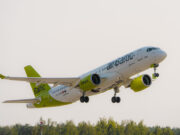
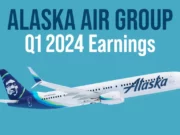































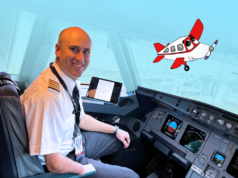

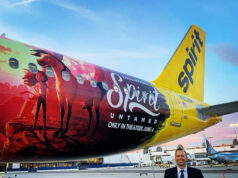

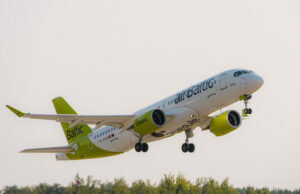





While all the contributing factors mentioned in the article have impacted the current pilot availability problem, I think a major factor was missed. With the major airlines hiring in record numbers the past year and half, the regional airlines’ training departments have been left empty. The majors tend to hire the most experienced pilots they can. This normally means senior regional captains and in particular, the regionals’ LCAs. A regional airline used to be able to hire and train 60+ pilots a month prior to 2020 with a full training department and could keep up or exceed their pilot attrition allowing them to stay the same size or grow. Now their training departments have trouble hanging onto its LCAs and there are not a lot of senior captains to make into LCAs. They have not been able to hire enough new pilots to keep up with attrition resulting in the regional airlines shrinking, routes being cut, and planes being parked.
The sudden growth in regional pay at American regionals is an attempt to keep those pilots onboard longer. American’s president’s recent comments saying that the industry will take a few more years to recover at the regionals support the “shortage” being at the regional training departments. The 50% override pay at American expiring in August of 2024 is one indicator of when at least one major airline is expecting their regional partners to recover.